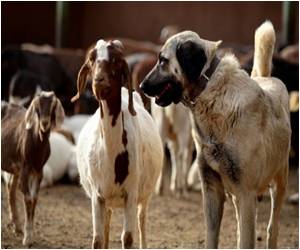New research on the domestication of donkeys, camelids (dromedaries, Bactrian camels, llamas, alpacas) pigs, cattle, sheep and goats suggests that neither intentional breeding nor genetic isolation were as significant as traditionally thought.

"Our findings show little control of breeding, particularly of domestic females, and indicate long-term gene flow, or interbreeding, between managed and wild animal populations," Marshall said.
Why is it important to get domestication right? "Our livestock is losing genetic diversity even faster than some wild animals, because of management practices like artificial insemination," Marshall said.
"We took only a bit of the diversity from the wild for domestication, and what we're looking at now is lopping it off really fast so we'll be left with little diversity to survive all the climate and disease issues we're facing. It really is a crisis situation.
"If we don't understand what it is we might be about to lose, then we don't count the cost of loss accurately or know how to plan for the future," she said.
For most of history, artificial selection on large herbivores was probably weak, Marshall said.
Advertisement
These management practices placed only light selection pressure on the herd's gene pool.
Advertisement
Sometimes domesticated animals were intentionally bred with wild ones, Marshall said.
"Wild animals are generally faster, stronger and better adapted to the local conditions than domesticated ones. So, for example, Beja herders in Northeastern Africa intentionally bred their donkeys with African wild asses in order to produce stronger transport animals," she said.
"And sometimes interbreeding was accidental," she added.
In the Andes, Capriles said, wild and domestic camelids have interbred in such complex ways that alpacas are maternally related to both wild vicunas and guanacos, and the same is true for llamas.
The findings are published in The Proceedings of the National Academy of Sciences.
Source-ANI










